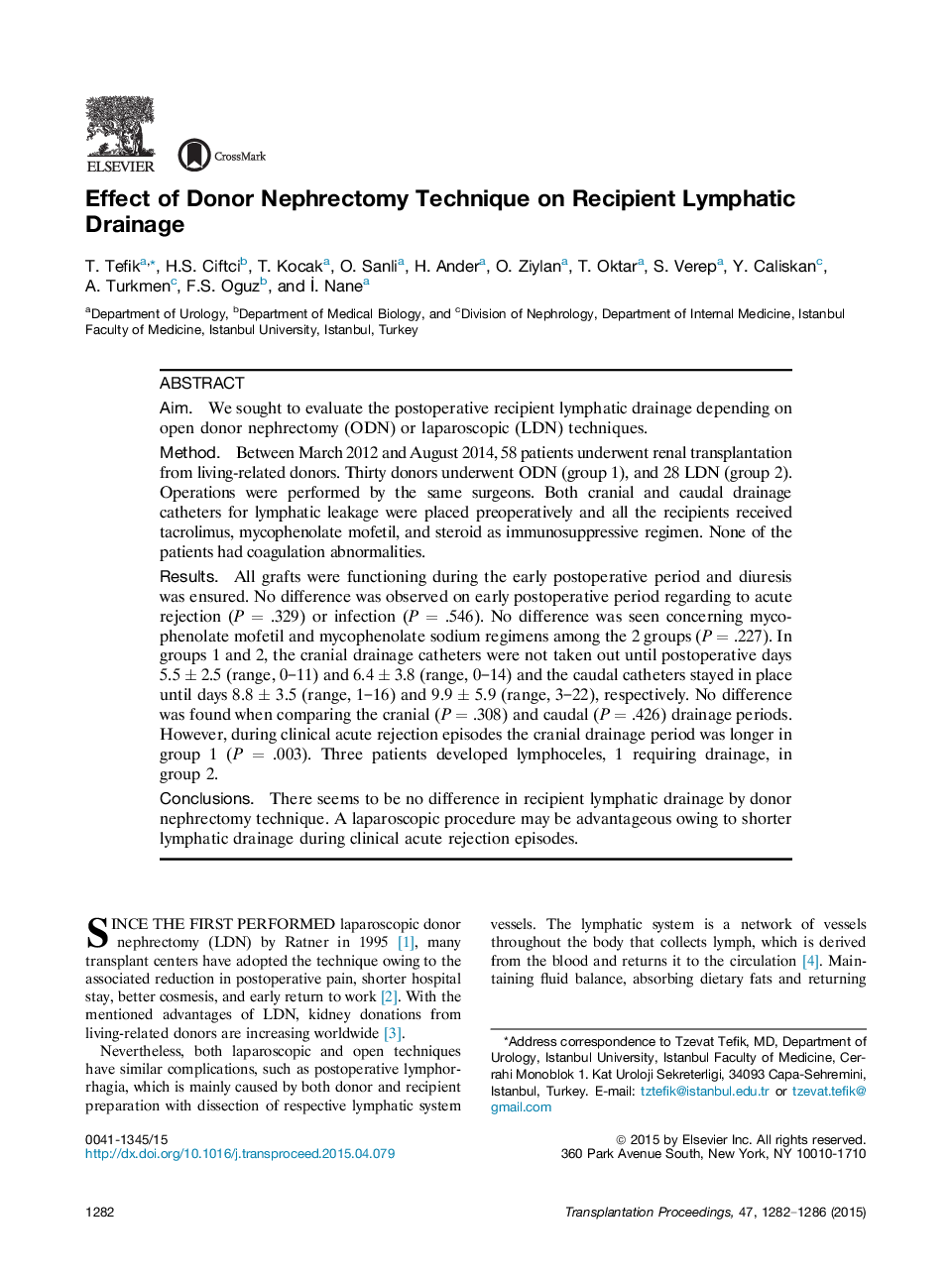| Article ID | Journal | Published Year | Pages | File Type |
|---|---|---|---|---|
| 4257359 | Transplantation Proceedings | 2015 | 5 Pages |
AimWe sought to evaluate the postoperative recipient lymphatic drainage depending on open donor nephrectomy (ODN) or laparoscopic (LDN) techniques.MethodBetween March 2012 and August 2014, 58 patients underwent renal transplantation from living-related donors. Thirty donors underwent ODN (group 1), and 28 LDN (group 2). Operations were performed by the same surgeons. Both cranial and caudal drainage catheters for lymphatic leakage were placed preoperatively and all the recipients received tacrolimus, mycophenolate mofetil, and steroid as immunosuppressive regimen. None of the patients had coagulation abnormalities.ResultsAll grafts were functioning during the early postoperative period and diuresis was ensured. No difference was observed on early postoperative period regarding to acute rejection (P = .329) or infection (P = .546). No difference was seen concerning mycophenolate mofetil and mycophenolate sodium regimens among the 2 groups (P = .227). In groups 1 and 2, the cranial drainage catheters were not taken out until postoperative days 5.5 ± 2.5 (range, 0–11) and 6.4 ± 3.8 (range, 0–14) and the caudal catheters stayed in place until days 8.8 ± 3.5 (range, 1–16) and 9.9 ± 5.9 (range, 3–22), respectively. No difference was found when comparing the cranial (P = .308) and caudal (P = .426) drainage periods. However, during clinical acute rejection episodes the cranial drainage period was longer in group 1 (P = .003). Three patients developed lymphoceles, 1 requiring drainage, in group 2.ConclusionsThere seems to be no difference in recipient lymphatic drainage by donor nephrectomy technique. A laparoscopic procedure may be advantageous owing to shorter lymphatic drainage during clinical acute rejection episodes.
